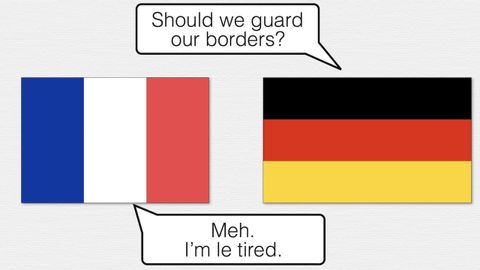6分鐘了解「歐盟」 - The European Union Explained*
VoiceTube 發佈於 2013 年 07 月 15 日  沒有此條件下的單字
沒有此條件下的單字- n.(書的)篇;節;等分之一;(頭髮的)分線;角色;部分;角色
- v.t.將(頭髮)分線
- v.t./i.遠離;分離
- adj.部分的
US /ˈkʌntri/
・
UK /ˈkʌntri/
- n. (c./u.)國;農村地區;國民;領土;鄉村音樂
- adj.鄉村的;國家的
- v.i.現場;住;住
- adj.現場直播的;帶電的;燃燒;活的
- v.t.活著
- adv.現場直播
US /ˈbɑ:təmləs/
・
UK /ˈbɒtəmləs/

